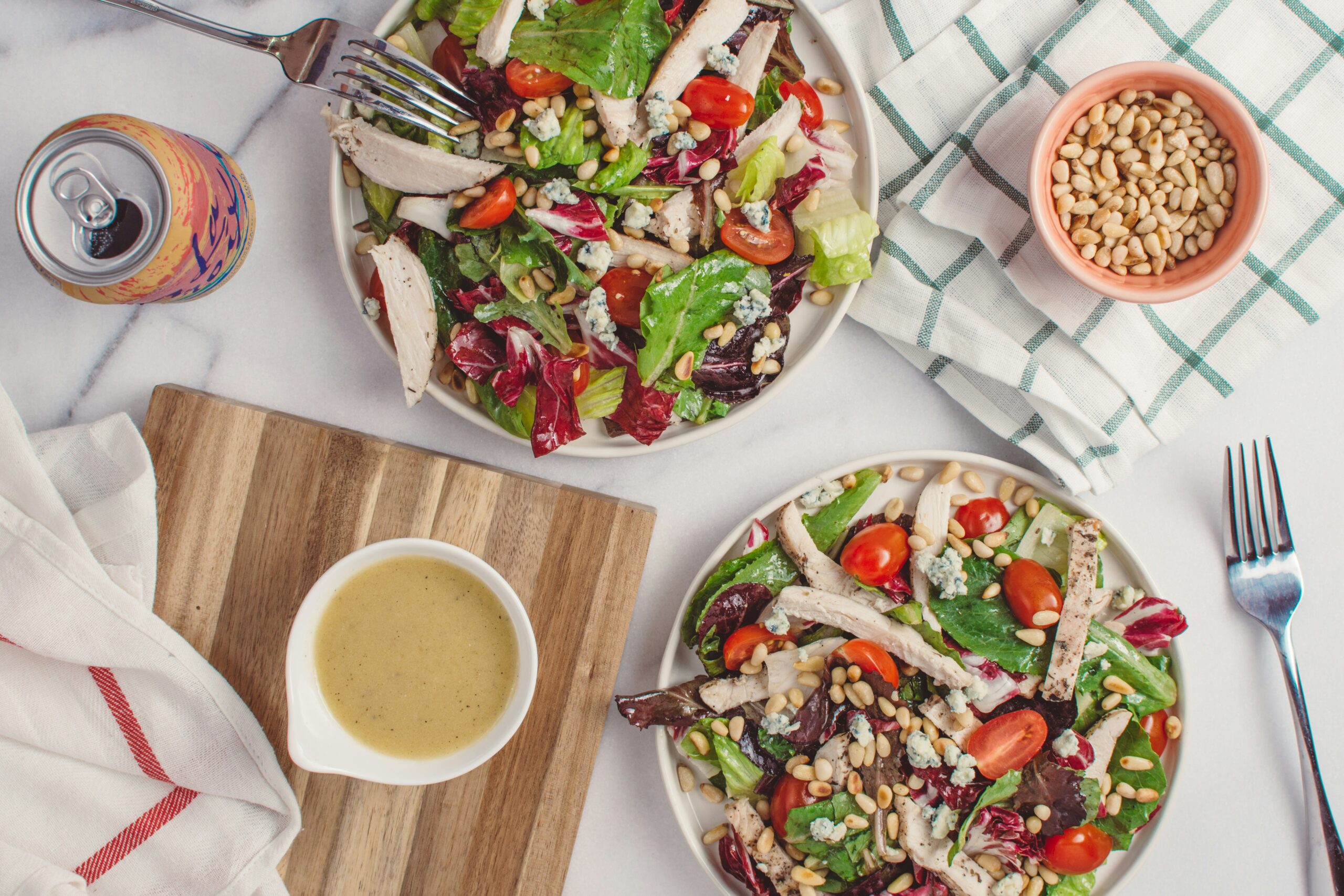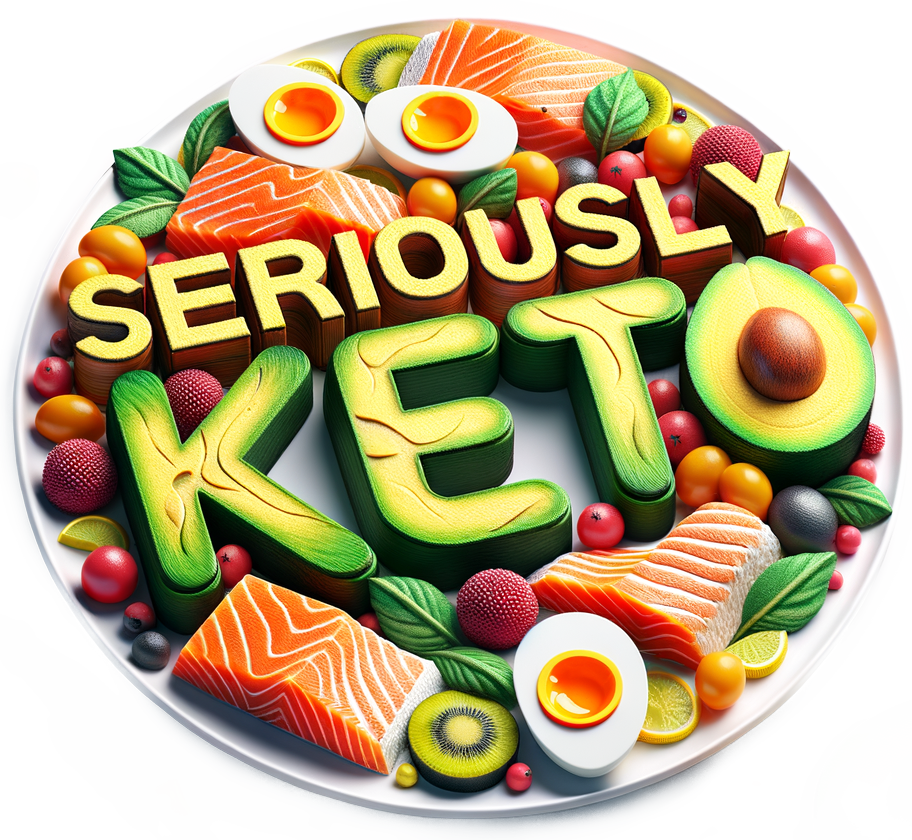Looking to embrace the keto lifestyle but not sure where to start when it comes to food choices? Look no further! In this article, we will take a closer look at some of the most popular and delicious options that perfectly align with the keto diet. From mouthwatering meats to indulgent fats and refreshing produce, we’ve got you covered with an array of delectable choices that will keep you satisfied and on track with your health goals. So, get ready to tantalize your taste buds and discover a whole new world of keto-friendly foods that will leave you feeling energized and satisfied.

Understanding the Ketogenic Diet
The ketogenic diet, often referred to as the keto diet, is a low-carb, high-fat diet that has gained significant popularity in recent years. The main principle behind the diet is to shift your body into a state of ketosis, where it burns fat for fuel instead of carbohydrates. This is achieved by drastically reducing your carbohydrate intake and increasing your consumption of healthy fats. By understanding the science behind the keto diet, you can make informed choices about the foods you consume and reap the benefits it offers.
Explaining the science behind the keto diet
The science behind the keto diet lies in its ability to put your body into a metabolic state called ketosis. Normally, our bodies rely on carbohydrates as the primary source of energy. However, by drastically reducing carbohydrate intake and increasing fat consumption, you force your body to enter a state where it begins to burn fat for fuel instead. This process leads to the production of ketones, which are molecules that serve as an alternative energy source. This metabolic shift not only aids in weight loss but also offers other potential health benefits such as improved mental clarity, increased energy levels, and better blood sugar control.
Reasons people choose the ketogenic diet
People choose the ketogenic diet for various reasons, and it has become particularly popular for weight loss and improving overall health. One of the main benefits of the keto diet is its ability to promote weight loss by encouraging the body to burn stored fat. Additionally, the diet has shown promise in managing conditions such as type 2 diabetes and epilepsy. Some people also find that following a keto diet helps reduce inflammation, improves skin health, and increases mental focus and productivity. It’s important to note that the ketogenic diet may not be suitable for everyone, so it’s always best to consult with a healthcare professional before starting any new dietary regimen.
Result of long-term adherence to a ketogenic diet
Long-term adherence to a ketogenic diet can have a profound impact on your health and well-being. Studies have shown that maintaining a keto diet can lead to sustained weight loss, improved insulin sensitivity, and better cholesterol levels. Other potential benefits include reduced inflammation, increased energy levels, and improved cognitive function. It’s worth noting that the long-term effects of following a keto diet are still being studied, and it may be important to ensure you are meeting your nutritional needs through careful food selection and supplementation. It’s important to approach the keto diet as a lifestyle change rather than a short-term solution for weight loss.
Protein Sources in Keto Diet
Protein is an essential macronutrient that plays a crucial role in various bodily functions. In the context of the ketogenic diet, it is important to choose protein sources that are low in carbohydrates and high in healthy fats. Here are some protein sources that are considered keto-friendly:
Consumption of lean meats
Lean meats such as chicken breast, turkey breast, and lean cuts of beef are excellent sources of protein on a keto diet. These meats not only provide a good amount of protein but are also low in carbohydrates. They can be grilled, roasted, or incorporated into a variety of delicious keto-friendly recipes.
Inclusion of fatty fishes
Fatty fishes like salmon, mackerel, and sardines are not only rich in protein but also contain high amounts of omega-3 fatty acids. These healthy fats are known for their anti-inflammatory properties and numerous health benefits. Fatty fishes can be baked, grilled, or pan-seared to enjoy their delicious taste while meeting your protein needs.
Use of eggs as a protein source
Eggs are a versatile and cost-effective protein source that is perfect for a keto diet. They are low in carbohydrates and high in healthy fats and provide essential nutrients such as choline and biotin. Eggs can be prepared in various ways, including boiled, scrambled, or used as an ingredient in omelets and frittatas.
Incorporation of plant-based protein
If you follow a vegetarian or vegan keto diet, incorporating plant-based protein sources is crucial. Foods such as tofu, tempeh, and edamame are low in carbohydrates and high in protein, making them excellent options. Additionally, incorporating nuts and seeds like almonds, chia seeds, and hemp seeds into your diet can provide a good amount of protein while also adding healthy fats and fiber.
Healthy Fats in the Ketogenic Diet
Contrary to the typical low-fat diets, the ketogenic diet encourages the consumption of healthy fats. These fats not only provide energy but also play an essential role in various bodily functions. Here are some healthy fats that are commonly included in a ketogenic diet:
The role of avocados in the keto diet
Avocados are a staple in the ketogenic diet due to their high-fat content and low carbohydrate count. They are rich in monounsaturated fats, which are considered heart-healthy fats. Avocados can be enjoyed in various ways, such as sliced on top of salads, mashed and spread on keto-friendly bread, or used as a base for creamy dressings and sauces.
Use of coconut oil and olive oil
Coconut oil and olive oil are two oils commonly used in the ketogenic diet. Coconut oil is rich in medium-chain triglycerides (MCTs), which are quickly converted into ketones and used as an energy source. Olive oil, on the other hand, is a great source of monounsaturated fats and is known for its antioxidant properties. Both oils can be used for cooking, baking, and drizzling over salads for added flavor and healthy fats.
Benefits of including nuts and seeds
Nuts and seeds are not only packed with healthy fats but also provide important nutrients such as vitamins, minerals, and fiber. Almonds, macadamia nuts, walnuts, chia seeds, and flaxseeds are all excellent choices for a ketogenic diet. They can be enjoyed as a snack, added to salads or stir-fries, or incorporated into keto-friendly baked goods and desserts.
Vegetable Choices in Keto Diet
While the ketogenic diet is often associated with high-fat foods, it is important to incorporate a variety of vegetables to ensure you are getting essential nutrients and fiber. Here are some vegetable choices that are suitable for a ketogenic diet:
Power of leafy greens
Leafy greens such as spinach, kale, and lettuce are low in carbohydrates and high in essential vitamins and minerals. They are also packed with fiber, which aids in digestion and helps you feel full for longer. Leafy greens can be enjoyed in salads, sautéed as a side dish, or added to soups and stews for added nutrition.
Utilization of above-ground vegetables
Above-ground vegetables like broccoli, cauliflower, zucchini, and bell peppers are low in carbohydrates and rich in vitamins and minerals. These vegetables can be roasted, steamed, or stir-fried to preserve their nutrients and enhance their flavor. They are also versatile and can be used as substitutes for high-carbohydrate ingredients in recipes, such as cauliflower rice instead of regular rice.
Benefits of cruciferous vegetables like broccoli and cauliflower
Cruciferous vegetables, including broccoli and cauliflower, are not only low in carbohydrates but also contain compounds that have been linked to numerous health benefits. These vegetables are rich in fiber, vitamins, and minerals and have been shown to have anti-inflammatory and antioxidant properties. They can be enjoyed in various dishes, such as roasted broccoli, cauliflower mash, or even as a base for a keto-friendly pizza crust.

Various Dairy Products
Dairy products can be a valuable part of a ketogenic diet, as they provide a good source of protein and fat. However, it is important to choose full-fat or high-fat options and be mindful of your individual tolerance to dairy. Here are some dairy products that are commonly included in a ketogenic diet:
Role of cheese
Cheese is a popular dairy product for those following a ketogenic diet. It is high in fat and protein and can be enjoyed in various forms, such as sliced, grated, or melted. Cheese adds flavor to your dishes and can be used in recipes like omelets, casseroles, and salads. However, it’s important to choose cheese varieties that are lower in carbohydrates, such as cheddar, Swiss, and mozzarella.
Benefits of yogurts
Yogurts, especially full-fat Greek yogurts, can be a healthy and delicious addition to a ketogenic diet. They are a good source of protein and provide beneficial probiotics for gut health. When choosing yogurt, opt for plain, unsweetened varieties and avoid those with added sugars or flavorings. You can enhance the flavor by adding a sprinkle of low-carb sweeteners, nuts, or berries.
Keto-friendly Fruits
Fruits are generally higher in carbohydrates, making them more challenging to include in a ketogenic diet. However, there are some fruits that are lower in carbohydrates and can be enjoyed in moderation. Here are some keto-friendly fruits to consider:
Importance of berries
Berries such as strawberries, blueberries, and raspberries are relatively low in carbohydrates compared to other fruits. They are packed with antioxidants, fiber, and essential nutrients. Berries can be enjoyed on their own as a snack, added to smoothies or yogurt, or used as a topping for keto-friendly desserts. Just be mindful of portion sizes and incorporate them into your overall daily carbohydrate allowance.
Benefits of olives
Olives are a unique fruit that is high in healthy fats and low in carbohydrates. They are a great source of monounsaturated fats and contain beneficial antioxidants. Olives can be enjoyed as a snack, added to salads, or used as a garnish in various dishes. They add a burst of flavor and healthy fats without compromising your ketogenic diet goals.
Role of lemons and other low sugar fruits
Lemons, limes, and other citrus fruits are relatively low in carbohydrates and can be used in moderation to add flavor to your dishes and beverages. They are a good source of vitamin C and can be used to make refreshing keto-friendly drinks, dressings, and marinades. Just be cautious with other tropical fruits like mangoes, pineapples, and bananas, as they are higher in carbohydrates and should be limited or avoided on a ketogenic diet.

Food Items to Avoid in Keto Diet
While there are many food choices that are suitable for a ketogenic diet, there are certain items that are best avoided due to their high carbohydrate content. Here are some food items to steer clear of:
Starchy vegetables and grains avoidance
Starchy vegetables such as potatoes, sweet potatoes, and corn are high in carbohydrates and can quickly add up your carbohydrate intake. Similarly, grains like wheat, rice, and oats are also high in carbs and should be restricted on a ketogenic diet. Opt for lower-carbohydrate alternatives like cauliflower or zucchini to satisfy your cravings instead.
Reduce sugar intake
Sugar is a definite no-no on a ketogenic diet. Avoid sugary foods and beverages, including soda, candy, pastries, and desserts. Instead, opt for natural sweeteners like stevia or erythritol in moderation to satisfy your sweet tooth without compromising your state of ketosis.
Limited fruit intake
While some fruits are suitable for a ketogenic diet, it’s important to moderate your fruit intake. Fruits like bananas, apples, and grapes are higher in carbohydrates and can disrupt your ketosis. Stick to small portions of low-carbohydrate fruits like berries and lemons, and track your intake to ensure it fits within your daily carbohydrate limit.
No to low-fat diet foods
The ketogenic diet is based on the principle of high-fat consumption, so it’s best to avoid low-fat or fat-free diet foods. These products often contain added sugars or fillers to compensate for the lack of fat, which can hinder your progress on a ketogenic diet. Instead, focus on consuming natural, whole food sources of fat to support ketosis and overall health.
Sweeteners and Condiments in Keto Diet
While sugar is off-limits in a ketogenic diet, there are alternative sweeteners and condiments that can be used to enhance the flavor of your meals without adding excess carbohydrates. Here are some options to consider:
Using Stevia and Erythritol as alternatives
Stevia and erythritol are two popular natural sweeteners that are considered keto-friendly. They provide sweetness without impacting blood sugar levels, making them suitable for a ketogenic diet. These sweeteners can be used in tea or coffee, added to keto-friendly desserts, or used in baking to replace sugar.
Content moderation of ketchup and mayonnaise
Condiments like ketchup and mayonnaise can be high in added sugars and unhealthy fats, so it’s important to choose them carefully or consume them in moderation. Look for low-sugar or sugar-free versions of ketchup and opt for mayonnaise made with healthy oils like avocado or olive oil. Alternatively, you can make your own condiments at home using keto-friendly ingredients.
Utilizing herbs and spices
Herbs and spices are a great way to add flavor to your meals without adding extra carbohydrates. Spices like turmeric, cumin, cinnamon, and ginger not only enhance the taste of your dishes but also provide potential health benefits. Fresh herbs like basil, cilantro, and rosemary can also be used to elevate the flavors of your recipes. Experiment with different combinations to find your favorite flavor profiles while keeping your meals keto-friendly.
Drinks to Consume on a Keto Diet
Staying hydrated is crucial on a ketogenic diet, and there are various drink options that can quench your thirst while supporting your state of ketosis. Here are some recommended drinks:
Inclusion of green tea and black coffee
Green tea and black coffee are both excellent options for a ketogenic diet. They are virtually calorie-free and can be enjoyed hot or cold. Green tea is rich in antioxidants and black coffee provides a natural energy boost. However, it’s important to consume these drinks without additives like sugar or milk, as they can add unwanted carbohydrates.
Consumption of water and sparklings
Water should be your main beverage when following a ketogenic diet. It keeps you hydrated, helps flush out toxins, and supports various bodily functions. You can also opt for sparkling water or club soda, which can add some variety and bubbles to your drinks without adding any additional calories or carbohydrates.
Role of bone broth
Bone broth is a popular drink among those following a ketogenic diet, as it is rich in collagen and essential vitamins and minerals. It provides hydration and can also help alleviate symptoms of the “keto flu,” which may occur during the initial stages of transitioning into ketosis. You can enjoy bone broth on its own or use it as a base for soups and stews.
Meal Planning and Tracking in Keto Diet
Meal planning and tracking your macronutrient intake are key components of a successful ketogenic diet. By being mindful of your food choices and monitoring your macros, you can optimize your nutrition and achieve your health goals. Here’s why meal planning and tracking are important:
Importance of meal planning
Meal planning is crucial in a ketogenic diet to ensure you have a variety of keto-friendly options on hand and can stick to your dietary goals. By planning your meals ahead of time, you can avoid impulsive food choices and better manage portion sizes. It also helps you stay organized and saves time in the kitchen. Plan your meals for the week, make a shopping list of necessary ingredients, and prep as much as possible to set yourself up for success.
Benefits of tracking your macros
Tracking your macronutrient intake, specifically your carbohydrates, protein, and fat, is essential to maintain ketosis and achieve your desired results. By monitoring your macros, you can ensure you’re within your personalized daily limits and adjust your food choices accordingly. There are various apps and online tools available that can help you track your macros and provide nutritional information for different foods.
Using apps for keto tracking
There are several apps specifically designed for tracking macros on a ketogenic diet. These apps allow you to input your daily food choices and automatically calculate your macronutrient intake. They often provide a database of food items and their nutritional values, making it easier to stay within your desired carbohydrate, protein, and fat targets. Some popular keto tracking apps include MyFitnessPal, Carb Manager, and Cronometer.
In conclusion, the ketogenic diet can be a beneficial way of eating for many individuals. By understanding the science behind the diet, incorporating a variety of protein sources, healthy fats, vegetables, dairy products, and keto-friendly fruits, avoiding certain food items, using appropriate sweeteners and condiments, consuming suitable beverages, and implementing meal planning and tracking, you can make the most of the ketogenic diet and potentially reap its numerous benefits. It’s essential to approach this dietary lifestyle change with a positive mindset and consult with a healthcare professional if you have any concerns. Remember, the keto diet is not a one-size-fits-all approach, and it may require adjustments based on your individual needs and goals.

